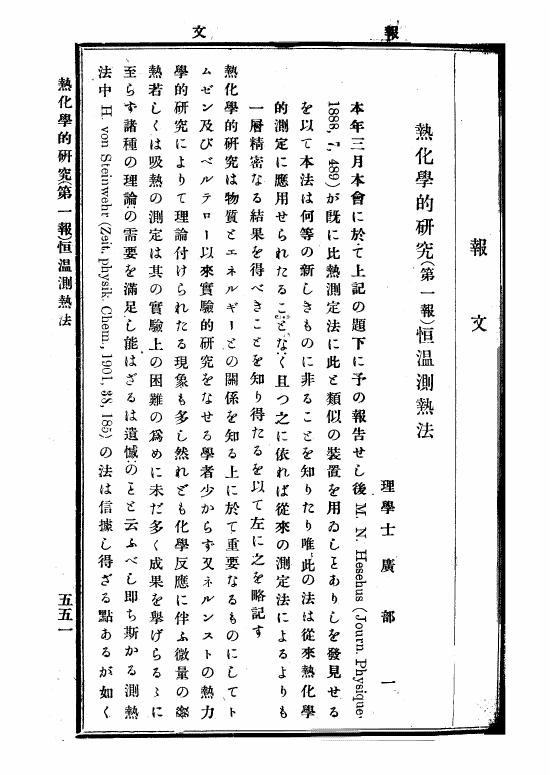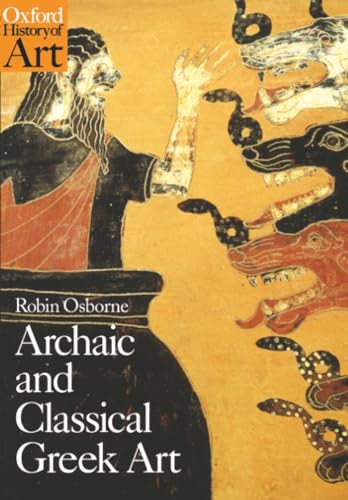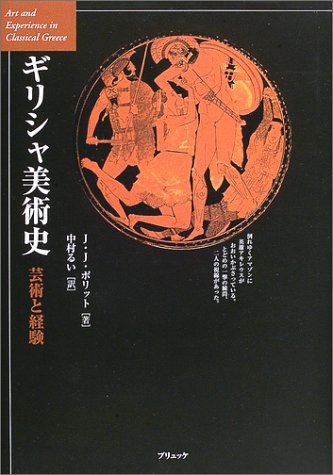1 0 0 0 IR 歌を使って外国語を教える方法
- 著者
- Ashcroft Robert J.
- 出版者
- 東海大学国際文化学部
- 雑誌
- 東海大学国際文化学部紀要 (ISSN:18835252)
- 巻号頁・発行日
- no.12, pp.1-11, 2020-03-18
1 0 0 0 IR 佐田谷・佐田峠墳墓群発掘調査報告書 研究編
- 著者
- 野島 永 村田 晋 今福 拓哉 真木 大空 今西 隆行 シュタインハウス ウェルナー
- 出版者
- 庄原市教育委員会
- 雑誌
- 広島大学大学院文学研究科考古学研究室報告
- 巻号頁・発行日
- no.4, pp.1-148, 2018-03-31
The Satadani-Satadao group of graves with burial mound, where the excavations were carried out, is located at the urban area on the east side of Shōbara city in the northern part of Hiroshima Prefecture. The group was built between the end of the last third of the Middle Yayoi period (1st century BC) and the first third of the Late Yayoi period (1st century AD).A series of excavations yielded the following results: Satadani grave No. 1 and 2, Satadao grave No. 3 are graves with rectangular burial mound and four corner projections (yosumi tosshutsugata funkyū bo); Satadao grave No. 4 has also a rectangular burial mound with four corner projections, but it has subsequently been modified and altered into a square-shaped burial mound; Satadani grave No. 3, Satadao grave No. 1 and 2 are square-shaped ditch-enclosed slightly elevated burial precincts (hōkei shūkō bo); Satadao grave No. 5 is a square-shaped ditch-enclosed slightly elevated burial precinct (hōkei shūkō bo), where on the inside of the ditch-enclosed space a grave pit was confirmed.One important result of this investigation was the discovery of variations in Yayoi burial mound construction techniques. Towards the end of the last third of the Middle Yayoi period after repeated burials of several individuals, the burial mound of the Satadao No. 3 grave was completed. In other words, it became clear, that at the grave No. 3 with rectangular burial mound with four corner projections, grave pits were first excavated before the burial mound was finally taking shape. Then the deceased persons were buried within and thereafter the grave pits were backfilled with the soil of the pit excavation. The so repeated iterations of grave pit excavation, burial and backfilling gradually produced the mound. However, on the other hand at Satadani grave No. 1, Satadao grave No.1 and 2 the burials took place after the earthworks of the mound were nearly completed.According to the results of the surveys, within the same group of graves one could confirm that the construction methods of the burial mounds changed: from the type, where the mound and the burial facilities are simultaneously constructed ("concurrent progression" type) of the end of the last third of the Middle Yayoi period to the type, where burial mound construction proceeds first ("mound first" type) of the first third of the Late Yayoi period. It became clear that this is a rather rare group ofgraves with burial mound.Due to our research it became clear that from the San'in region to the Chūgoku mountain range, a type of burial – termed here, the "mound last" type – can be found, wherein an earth mound was constructed only after digging the grave and completing the burial. The "concurrent progressive" types, referred to previously, were common in the Middle Yayoi period stage. The "mound-first" type noted at Satadani grave No. 1 appeared in the Late Yayoi period. These elements were adopted in large or huge burial mounds in other regions. This empirical evidence demonstrates that changes in burial mound construction methods were a catalyst for the changes in burial rites – concerning their scale and magnificence on the occasion of burials of chiefs.In Satadani burial mound No. 3, small grave pits are distributed at the lower level of the mounding, revealing that burials were continually taking place there while the mound was being formed. Furthermore, a large grave pit over 6m in length, which constitutes the principal burial chamber, was detected in the upper mounding along with shafts and other burial facilities, and part of this pit was revealed to be overlapping with another grave pit which constitutes a peripheral burial chamber. It is therefore plausible that this burial mound can be classified as an "eclectic" style that mixes together the "concurrent progressive" and "mound-first" styles. Moreover, two pieces of earthenware were unearthed: vermilion-lacquered vessels with spout and large attached pedestal foot. These were products of the technology of the southern part of Okayama Prefecture. Interestingly, they have holes knocked into them. This feature conjures up an image of the subsequent ceremonial vessel stand (tokushu kidai), which later evolved into the cylindrical clay figures (entō haniwa) of the Kofun period).The Satadani burial mound group is the place where funeral rituals first started to involve a combination of elements such as the following: A wooden chamber (mokkaku) housing a wooden coffin is interred within the burial pit and then large red-colored pottery (like vessels with attached pedestal foot, chūkō kyaku tsuki bachi) are offered at the surface of the grave pit; round pebbles or stone slabs are distributed around the grave to serve as markers, which were become used with offering pottery in the Late Yayoi period; and the graves are arranged in such a way that a large grave pit constituting the main burial is surrounded by other smaller burials in its vicinity at the top of the mound. These elements of ritual (facilities, implements and process of the burial, etc.) are the origin of the elements of the funerary ritual observed in the large and giant Yayoi burial mounds that developed from the last third of the Late Yayoi period onward in the eastern part of Shimane Prefecture, the southern part of Okayama Prefecture, and the northern part of Kyōto Prefecture.The results of the research have provided further confirmation of the Satadani burial mound group's forerunner-status in the development of Yayoi burial mounds. The site vividly displayed the transformation in Yayoi burial mounds that occurred from the Middle Yayoi period to the Late Yayoiperiod.Thus, we identify the Satadani-Satadao burial mound group as an extremely important archaeological site for studying the development, in terms of appearance and increase in size, of the Yayoi-period burial mounds. This group is not only constructed during a relatively early stage of Yayoi period graves with burial mound, but also it became obvious that this a very important site, if one is taking into consideration the development of burial mounds of Yayoi period graves.In addition, this study incorporates the interrelation of burial mound construction methods and funeral rites, thus making it a fundamental investigation from a comparative archaeological perspective regarding the research of burial mounds not only in Japan, but also overseas.その他のタイトル : 庄原市教育委員会発掘調査報告書30本報告書〈研究編〉は『四隅突出型墳丘墓の発達に関する考古学的研究』と題する科学研究費補助金(基盤研究(C)、課題番号23520922〈研究代表者:野島 永〉)による調査研究の成果を掲載した。
1 0 0 0 IR 四拾貫小原弥生墳丘墓の再評価
- 著者
- 今福 拓哉
- 出版者
- 広島大学大学院文学研究科考古学研究室
- 雑誌
- 広島大学大学院文学研究科考古学研究室紀要
- 巻号頁・発行日
- no.9, pp.43-68, 2017-10-31
According to the 1969 investigation report regarding the "Shijikkan-kohara" which was excavated a year earlier, it comprised a series of pit graves (dokō bo) from the Yayoi period. However, a more recent reinvestigation of this site suggests instead that a rectangular-shaped grave with multi-row stone pavement on the slope of the burial mound (hōkei hariishi bo) is the case here. Therefore, "Shijikkan-kohara" has been re-defined as a Yayoi period grave with burial mound (yayoi funkyū bo).It was constructed in the last third of the Middle Yayoi period and contained five burial facilities. These facilities, including some for children, were built prior to the construction of the burial mound. According to this fact, it was built using the so-called "mound last" method, where the burial mound construction is carried out at the end, after the burial facility is dug out respectively erected (funkyū kōkōgata; "mound last" construction type).The ways through which one constructed the mound and the stone pavement and arranged the burials, were also investigated. Similarly, the Narahama Yayoi period burial mound group and the Umeda-kayamine burial mound in the Chūgoku region were both constructed using the "mound last" method. As both of them were built during the Middle Yayoi Period, one could shed light on the development of the construction method concerning the relationship between the burial facilities and the mound. It changed from the "mound last" type to "concurrent progression" type (here, the mound and the burial facilities are simultaneously constructed) to the "mound first" construction type, where the piling up of the burial mound proceeds first. In addition, it concerns the stone pavement at the mound base as well as boundary stones (hyōseki) on top of the grave pits such as stone alignments enclosing or paving the grave (haiseki) and arrangement of the the burials are indicating an initial type. This can be considered them as an ancestral form of Yayoi burial mounds in the Chūgoku region. Also the possibility can be assumed that this situation developed from burials practices which were already present in the San'in region and the Chūgoku mountainous regions during the first half of the Yayoi period.Accordingly, the "Shijikkan-kohara" Yayoi period burial mound is an important archaeological site for studying the origin and evolution of such graves with burial mounds during the Middle Yayoi period in the Chūgoku region.
1 0 0 0 IR 佐田谷・佐田峠墳墓群発掘調査報告書
- 著者
- 野島 永 広島大学大学院文学研究科考古学研究室 庄原市教育委員会
- 出版者
- 広島大学大学院文学研究科考古学研究室
- 雑誌
- 広島大学大学院文学研究科考古学研究室報告
- 巻号頁・発行日
- vol.3, pp.1-150, 2016-03-31
The Sata-dao group of graves with burial mound, where the excavations were carried out, is located in the urban area on the east side of Shōbara city in the northern part of Hiroshima Prefecture. The group was built between the end of the last third of the Middle Yayoi period (1st century BC) and the first third of the Late Yayoi period (1st century AD).A series of excavations yielded the following results: Sata-dao No. 1 and 2 are square-shaped ditch-enclosed slightly elevated burial precincts (hōkei shūkō bo); No. 3 is a grave with rectangular burial mound and four corner projections (yosumi tosshutsugata funkyū bo); No. 4 is also a grave with rectangular burial mound and four corner projections, but has subsequently been modified and altered into a square-shaped burial mound; No. 5 is a square-shaped ditch-enclosed slightly elevated burial precinct (hōkei shūkō bo), where on the inside of the ditch-enclosed space a grave pit was confirmed.Towards the end of the last third of the Middle Yayoi period after repeated burials of several individuals, the burial mound of the Sata-dao No. 3 grave was completed. At grave No. 4, which is from the same phase, in the lower strata of the burial mound the surface of the excavation of a grave pit could be confirmed. In other words, it became clear, that at the graves No. 3 and 4 with rectangular burial mound and four corner projections, grave pits were first excavated before the burial mound was finally taking shape. Then the deceased persons were buried within and thereafter the grave pits were backfilled with the soil of the pit excavation. The so repeated iterations of grave pit excavation, burial and backfilling gradually produced the mound. However, on the other hand at Sata-dao grave No.1 and 2 the burials took place after the earthworks of the mound were nearly completed.According to the results of the surveys, within the same group of graves one could confirm that the construction methods of the burial mounds changed: from the type, where the mound and the burial facilities are simultaneously constructed [co-occurrent progression type] of the end of the last third of the Middle Yayoi period to the type, where burial mound construction proceeds first ["mound first" type] of the first third of the Late Yayoi period. It became clear that is a rather rare group of graves with burial mound. This group is not only constructed during a relatively early stage of Yayoi period graves with burial mound, but also it became obvious that this is a very important site, if one is taking into consideration the development of construction methods of burial mounds of Yayoi period graves. Hereafter, for an understanding of the development of construction methods of burial mounds of Yayoi period graves the site is offering important insights.その他のタイトル:庄原市教育委員会発掘調査報告書第28冊本報告は広島大学大学院文学研究科考古学研究室と庄原市教育委員会が提携して推進している共同研究『佐田谷・佐田峠墳墓群の発掘調査』(研究代表者:古瀬清秀)および、『四隅突出型墳丘墓の発達に関する考古学的研究』と題する科学研究費補助金(基盤研究(C)、課題番号23520922〈研究代表者:野島 永〉)による調査研究の成果を掲載した。
1 0 0 0 次世代に伝え継ぐ 群馬の家庭料理
【目的】群馬県は日本の中央部に位置し、かつては養蚕業が盛んであったが、現在では兼業農家が多く、首都圏向けの農業物を生産している。この度、日本調理科学会特別研究『次世代に伝え継ぐ 日本の家庭料理』に参加し、群馬県内5地域で調査を行ったので報告する。<br>【方法】平成25年10月~26年2月に群馬県内の5地域において、各地域2名以上(60歳~80歳代、居住年数40年以上)の調査対象者に対して面接調査を行った。面接は特別研究の方法に従い、調査の同意を得た上で、調査票に沿って対話したものを記録した。<br>【結果】群馬県内全体では、昭和30年代までは現金収入としては、養蚕、水稲、麦、豆が中心であり、日常の食では、飯には押し麦を混ぜ、1日1食はうどん、おきりこみやすいとんなどの小麦粉を使った料理を食していた。内陸県のため、魚は行商から購入した干魚や缶詰、川魚を食した。野菜の煮しめ、けんちん汁、お焼き、きんぴら、まんじゅうも共通する料理である。ハレの食としては、北部のみなかみ町では、赤飯、うどん、そば、草餅のあんぴん、ぼたもち、まんじゅう、山菜の天ぷら、野菜の煮しめ、車麩の煮物、切り昆布の煮物など、赤城町では、餅、煮しめ、きんぴらなど、群馬町では、ザクニや天ぷら、赤飯、ふかしまんじゅうなど、中央部の前橋市田口では煮物、寿司、けんちん汁、ぼたもちなど、南部の太田市では、赤飯、けんちん汁、巻きずし、煮物などがあった。現在、みなかみ町や赤城町には農業環境と観光とを連携したが施設あり、地域の農産物を直売するとともに、そば打ちやこんにゃくつくりなどを体験でき、地域の家庭料理を伝える場ともなっている。
1 0 0 0 OA 平均株価・経済データの実証的カオス分析
- 著者
- 岩田 年浩 大石 太郎
- 出版者
- 関西大学
- 雑誌
- 情報研究 : 関西大学総合情報学部紀要 (ISSN:1341156X)
- 巻号頁・発行日
- vol.17, pp.1-31, 2002-08-20
ランダムに見える株価や経済データの変動に対する予測の可能性は,長く研究者の関心事であったが,それを分析する有効な手段は存在しなかった.ランダムな変動においては要素間の複雑な相互作用が関係しており,従来の回帰分析という近似では妥当し難い.近年, カオス研究の重要性については,自然科学や社会科学という枠組みを超えて議論がなされている.この新しい見解は,株価や経済データの分析においても新たな予測の可能性につながるものであるといえよう.本研究では,数値データそのものを定性的に分析する実証的カオス分析という新しい手法を用いて,株価や経済データの持つ独特の性質を抽出し,それが示す規則性から予測の可能性について検証した.
- 著者
- 谷川 安孝 広瀬 和彦
- 出版者
- 素粒子論グループ 素粒子論研究 編集部
- 雑誌
- 素粒子論研究 (ISSN:03711838)
- 巻号頁・発行日
- vol.47, no.6, pp.744-749, 1973
これまでに多くの人たちによって、素粒子の"ひも"モデルの力学的基礎づけがなされてきた。例えば、1次元な"ひも"が4次元空間に抜きかす2次元曲面の面積を極小にするという変分原理などが提案されている。ところで,そのときに使われる"ひも"上の1点を指定する座標X^μ(τ,σ)の時間的パラメーターτの物理的意味や、変分に対して付加する付加条件の力学的な意味が必ずしも明瞭にされていない。この論文では、相対論的弾性体理論から、直接に"ひも"や3次元的弾性体≡"こんにやく"の運動方程式を導くことにする。この方法では、使われる物理量は、最初からよく定義されているものだけであるから、"ひも"や"こんにやく"の力学的構造がはっきり解明される。
- 著者
- 池田
- 出版者
- 公益社団法人 日本化学会
- 雑誌
- 東京化學會誌 (ISSN:03718409)
- 巻号頁・発行日
- vol.15, pp.339-340, 1894 (Released:2009-02-05)
- 被引用文献数
- 1
1 0 0 0 OA 熱化學的研究(第一報)恒温測熱法
- 著者
- 廣部 一
- 出版者
- 公益社団法人 日本化学会
- 雑誌
- 東京化學會誌 (ISSN:03718409)
- 巻号頁・発行日
- vol.32, no.6, pp.551-559, 1911 (Released:2009-02-05)
1 0 0 0 Archaic and classical Greek art
- 著者
- Robin Osborne
- 出版者
- Oxford University Press
- 巻号頁・発行日
- 1998
1 0 0 0 IR 売春と臓器移植における交換と贈与
- 著者
- 井上 章一 森岡 正博
- 出版者
- 国際日本文化研究センター
- 雑誌
- 日本研究 (ISSN:09150900)
- 巻号頁・発行日
- no.2, pp.p97-106, 1990-03
「売春はなぜいけないんですか?」「身体を売るのはよくないんです。」「でも、我々は頭を売って生活していますよ。頭なら売っていいんですか?」「臓器移植って知ってますか。臓器移植は、無償の提供を原則として運営されます。臓器売買は、決して許されません。従って、売春も許されないのです。」「むちゃくちゃな話やなあ。」「いや、これは、現代社会における身体の交換と贈与に関する、重大な問題系なのです。売春と臓器移植というポレミックな問題を、こんなふうに結合させて論じたのは、我々が世界ではじめてでしょう。」「当たり前や。こんなアホな話、学問的に突き詰めるなんて、ふつうやりませんって。」
1 0 0 0 ギリシャ美術史 : 芸術と経験
1 0 0 0 OA P2-49 不快情動耐性の高低に関わる要因についての検討(ポスター発表(2))
- 著者
- 大江 悠樹 望月 聡
- 出版者
- 日本パーソナリティ心理学会
- 雑誌
- 日本パーソナリティ心理学会発表論文集 20 (ISSN:24332992)
- 巻号頁・発行日
- pp.153, 2011-09-02 (Released:2017-09-01)
- 著者
- 岩田 一正
- 出版者
- 一般社団法人 日本教育学会
- 雑誌
- 教育学研究 (ISSN:03873161)
- 巻号頁・発行日
- vol.64, no.4, pp.417-426, 1997
本論文は, 義務教育制度がその内実をほぼ完備し, 地域共同体が再編成されつつあった明治後期に, 少年たちが, 書字文化を媒介とした固有名の個人が集う公共圏をどのように構築していたのかを検討することを目的としている. 少年たちが雑誌への投稿者として共同性を構成する過程は, 自らを言葉を綴る主体として保つ近代に特有な方法を, 我々に開示してくれるだろう. 本論文が史料とするのは, 当時最も読まれていた少年雑誌であり, 明治後期の「出版王国」博文館によって発行されていた『少年世界』である. 『少年世界』に掲載された投稿文の分析を通して, 三つの観点が示されることになる. 第一に,1903年頃に『少年世界』の主筆である巌谷小波によって提示された言文一致体は, 天真爛漫な「少年」という概念を創出した. さらに, 『少年世界』編集部は投稿作文欄の規定を改正し, 少年たちは言文一致体で投稿するように要請された. その結果, 煩悶する「青年」と天真欄漫な「少年」が差異化され, 『少年世界』は後者のための雑誌となった. 第二に, 『少年世界』は, 少年に固有名をともなった他者とのコミュニケーションの場を提供した. しかし, その場は, 抽象的で均質な時空によって構成されていた. それゆえ, 少年たちは地域共同体からの切断に由来する, いまだかつて経験したことのない孤独を感じることになった. しかしながら, 投稿欄を利用することによって, その孤独を補償し, 他者との交歓=交感を享受するために, 少年たちは誰かに向かって何かを書こうとする欲望を生み出し, ある場合には, 同好のコミュニケーション・ネットワークを形成したのである. そして, この文脈において, 言文一致体は適合的な文体であった. なぜなら, 言文一致体は, 少年に見えざる他者の声を想像させることができるからである. また, 当時は, 国家的な郵便制度が確立したことによって, 文通によるコミュニケーションの制度的な基盤が整備された時期であった. 第三に, 少年たちは, 自らの手で雑誌を出版するようになった. ここで注目に値するのは, 活字で構成される一般の雑誌とは異なり, 少年が制作した雑誌は, 肉筆やこんにゃく版, 謄写版によって作られており, 手作りの感触を残していることである. 少年の雑誌制作は, 大正期以降の同人雑誌文化の基層を形成するものであり, この同人雑誌文化から, 数多くの文学作品が創出されることになる.
1 0 0 0 ヨウ素,二酸化硫黄および水の反応に対する二酸化硫黄分圧の影響
- 著者
- 中島 隼人 今井 良行 笠原 清司 久保 真治 小貫 薫
- 出版者
- 公益社団法人 化学工学会
- 雑誌
- 化学工学論文集 (ISSN:0386216X)
- 巻号頁・発行日
- vol.33, no.3, pp.257-260, 2007 (Released:2007-06-25)
- 参考文献数
- 9
- 被引用文献数
- 5 5
熱化学水素製造法ISプロセスの要素反応であるヨウ素と水の混合系への二酸化硫黄ガス吸収反応について,323 K,ヨウ素飽和条件で,二酸化硫黄分圧の影響を調べた.定圧二酸化硫黄ガス存在下,2相分離(硫酸相とポリヨウ化水素酸相),擬似平衡状態への到達が観察され,同状態におけるポリヨウ化水素酸に対してブンゼン反応の逆反応による理想的脱硫操作を行って得られる溶液の酸濃度(HI/(HI+H2O))は,高二酸化硫黄分圧の元で高く,最大15.7±0.3 mol%に達した.
1 0 0 0 OA 時、条件の副文を導入するsô, als(ô)について
- 著者
- 長縄 寛
- 出版者
- 関西大学独逸文学会
- 雑誌
- 独逸文學 (ISSN:0286682X)
- 巻号頁・発行日
- vol.50, pp.39-58, 2006-03-19
1 0 0 0 こんにゃく製品摂取による皮膚の保水性向上効果の検証
- 著者
- 高畑 浩之 荒木 美和子 向井 克之
- 出版者
- 群馬県農業技術センター
- 雑誌
- 群馬県農業技術センター研究報告 (ISSN:13489054)
- 巻号頁・発行日
- no.5, pp.40-41, 2008-03
こんにゃくいもには、およそ精粉成分10%、飛粉成分5%を含んでいるが、この飛粉部分にセラミドが特に多く含まれていることが明らかにされた。このこんにゃくセラミドは、1日0.6mgの摂取で皮膚の保水性向上効果があり、飛粉100g中には200mg程度、生いもこんにゃく100g中には多いもので1mg程度含まれていることが報告されている。そこで、生いもこんにゃくの消費拡大や、こんにゃくいもの安定生産、国内自給率の維持向上への寄与を目的に、生いもこんにゃく等の摂取による皮膚の保水性向上効果の検証を行うこととした。
1 0 0 0 OA 間葉系幹細胞の分化制御を目指した培養基板の設計
- 著者
- 山崎 雅史 木戸秋 悟 藤江 裕道 三好 洋美
- 出版者
- 一般社団法人 日本生物物理学会
- 雑誌
- 生物物理 (ISSN:05824052)
- 巻号頁・発行日
- vol.61, no.6, pp.389-391, 2021 (Released:2021-11-25)
- 参考文献数
- 10





